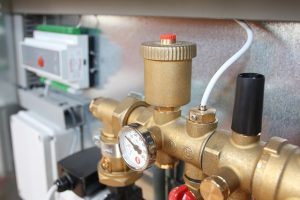The Architectural Adaptability of Dutch-Mandated Heating Systems
In architecture, adaptability of design is evaluated not only for environmental impact but also for flexibility, convertibility and upgradability of features. An example is the heating system that The Dutch government has mandated as replacement for coal-fueled boilers by year 2026.
 Inasmuch as heat pumps can improve the cost-saving efficiency of gas boilers, homeowners are also looking into the benefits of investing on underfloor heating systems to replace the conventional radiators. Although changes in a building or home are inevitable because of the needs and desires of occupants. The principle of architectural adaptability must be observed if the renovation or installation is to have an economic and physical impact.
Inasmuch as heat pumps can improve the cost-saving efficiency of gas boilers, homeowners are also looking into the benefits of investing on underfloor heating systems to replace the conventional radiators. Although changes in a building or home are inevitable because of the needs and desires of occupants. The principle of architectural adaptability must be observed if the renovation or installation is to have an economic and physical impact.
Concept of Architectural Adaptability
Architectural adaptability relates to the capability of a building to harbor or make room for additional major changes. The concept supports the idea that for all intents and purposes, all other subsequent changes will make the utilities of the building more efficient.
Even better still is that adaptability that allows for flexibility, convertibility and upgradability will make serviceability of existing features last longer, whilst maintaining lower costs.
Flexibility denotes allowing simple changes in space use while convertibility pertains to changes in use within the same building. Upgradability allows addition or expansion or in some cases shrinkage, if to maximize existing spaces.
The Architectural Adaptability of an Underfloor Heating System Paired with a Heat Pump
The main reason why the Dutch government is making heat pump installation mandatory is to reduce the cost of energy used in producing heat and possibly to cover larger spaces.
 Related studies show that underfloor heating is more methodical in the use of energy by at least 25%. While homeowners are encouraged to use the hybrid heat pump, this heating equipment is best for the wet type of underfloor heating system.
Related studies show that underfloor heating is more methodical in the use of energy by at least 25%. While homeowners are encouraged to use the hybrid heat pump, this heating equipment is best for the wet type of underfloor heating system.
Hybrid Heat Pump for Wet Underfloor Heating System
 A hybrid heat pump consists of a heat drawing apparatus that draws and distributes heat in specific indoor spaces. The heat distribution of the pump is monitored and regulated by a thermostat. Also, a gas boiler comes as an essential component of the heat pump, being the apparatus responsible for heating up water for use by building occupants.
A hybrid heat pump consists of a heat drawing apparatus that draws and distributes heat in specific indoor spaces. The heat distribution of the pump is monitored and regulated by a thermostat. Also, a gas boiler comes as an essential component of the heat pump, being the apparatus responsible for heating up water for use by building occupants.
A wet underfloor heating system has pipeworks for the hot water, placed under the floorings. That way the hybrid heat pump can also direct the heat of the hot water pipes toward the underfloor heating system. If warm air from outside sources is available, the hybrid heat pump can draw and distribute underfloor heating from this source.
Dry Underfloor Heating System
- The alternative to a wet underfloor heating is the use of warp systems that allow for a dry type of underfloor heating. Here, a set of various materials form layers, including the network of cables hooked up to a heat generating system. Not a few prefer this kind of underfloor heating because installation is easier, as well as hassle- and dust-free.
